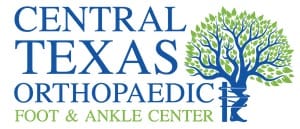Common Diagnoses:
Flexible Flat Feet
Flexible Flat Feet Overview
Flexible flatfoot is one of the most common types of flatfoot. It typically begins in childhood or adolescence and continues into adulthood. It usually occurs in both feet and progresses in severity throughout the adult years. As the deformity worsens, the soft tissues (tendons and ligaments) of the arch may stretch or tear and can become inflamed. The term “flexible” means that while the foot is flat when standing (weightbearing), the arch returns when not standing.
Flexible Flat Feet Symptoms
Symptoms that may occur in some persons with flexible flatfoot include:
- Pain in the heel, arch, ankle or along the outside of the foot
- Rolled-in ankle (overpronation)
- Pain along the shin bone (shin splint)
- General aching or fatigue in the foot or leg
- Low back, hip or knee pain
Flexible Flat Feet Diagnosis
In diagnosing flatfoot, the foot and ankle surgeon examines the foot and observes how it looks when you stand and sit. X-rays are usually taken to determine the disorder’s severity. If you are diagnosed with flexible flatfoot, but you do not have any symptoms, your surgeon will explain what you might expect in the future.
Flexible Flat Feet Treatment
If you experience symptoms with flexible flatfoot, the surgeon may recommend nonsurgical treatment options, including:
Activity modifications. Cut down on activities that bring you pain and avoid prolonged walking and standing to give your arches a rest.
Weight loss. If you are overweight, try to lose weight. Putting too much weight on your arches may aggravate your symptoms.
Orthotic devices. Your foot and ankle surgeon can provide you with custom orthotic devices for your shoes to give more support to the arches.
Immobilization. In some cases, it may be necessary to use a walking cast or to completely avoid weightbearing.
Medications. Nonsteroidal anti-inflammatory drugs (NSAIDs), such as ibuprofen, help reduce pain and inflammation.
Shoe modifications. Wearing shoes that support the arches is important for anyone who has flatfoot.
Ankle Foot Orthoses (AFO) devices. Your foot and ankle surgeon may recommend advanced bracing to modify your walking and to support your arches.

